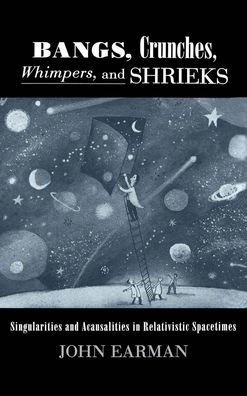5
1
9780195095913


Bangs, Crunches, Whimpers, and Shrieks: Singularities and Acausalities in Relativistic Spacetimes available in Hardcover

Bangs, Crunches, Whimpers, and Shrieks: Singularities and Acausalities in Relativistic Spacetimes
- ISBN-10:
- 019509591X
- ISBN-13:
- 9780195095913
- Pub. Date:
- 11/02/1995
- Publisher:
- Oxford University Press
- ISBN-10:
- 019509591X
- ISBN-13:
- 9780195095913
- Pub. Date:
- 11/02/1995
- Publisher:
- Oxford University Press
195.0
In Stock

Product Details
| ISBN-13: | 9780195095913 |
|---|---|
| Publisher: | Oxford University Press |
| Publication date: | 11/02/1995 |
| Edition description: | New Edition |
| Pages: | 272 |
| Product dimensions: | 6.50(w) x 9.50(h) x 1.13(d) |
About the Author
From the B&N Reads Blog
